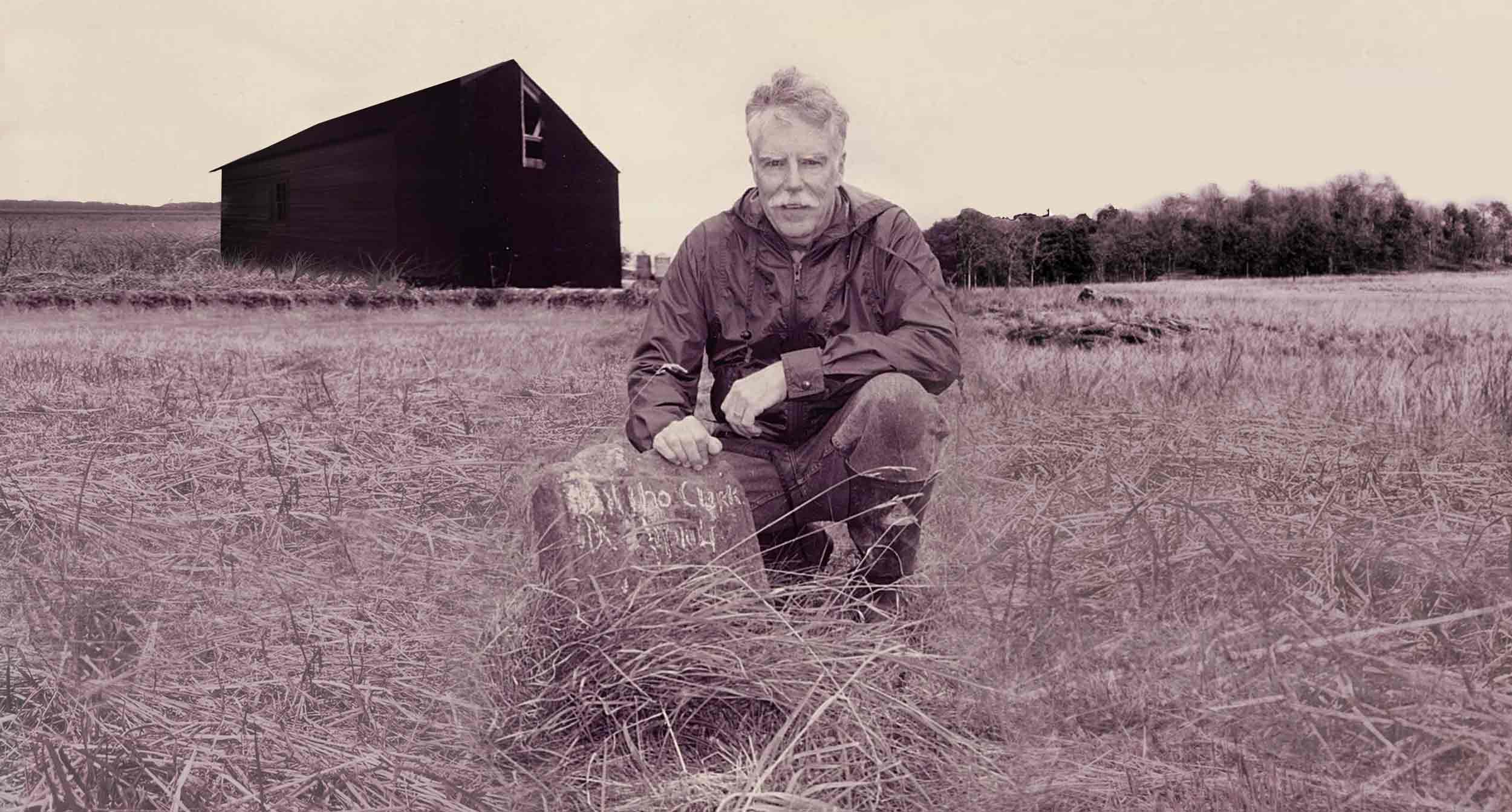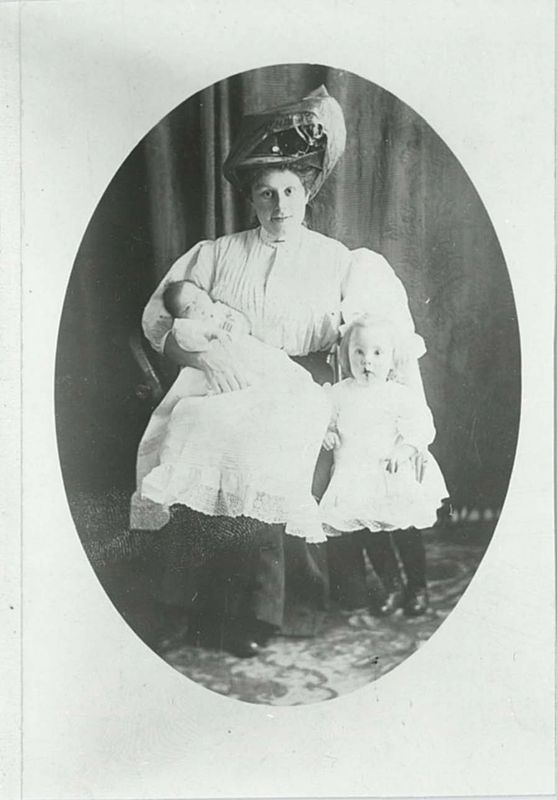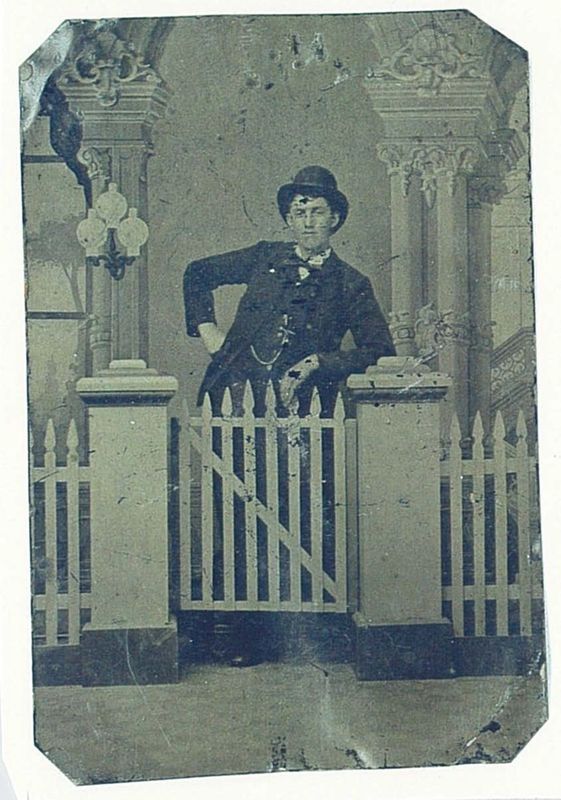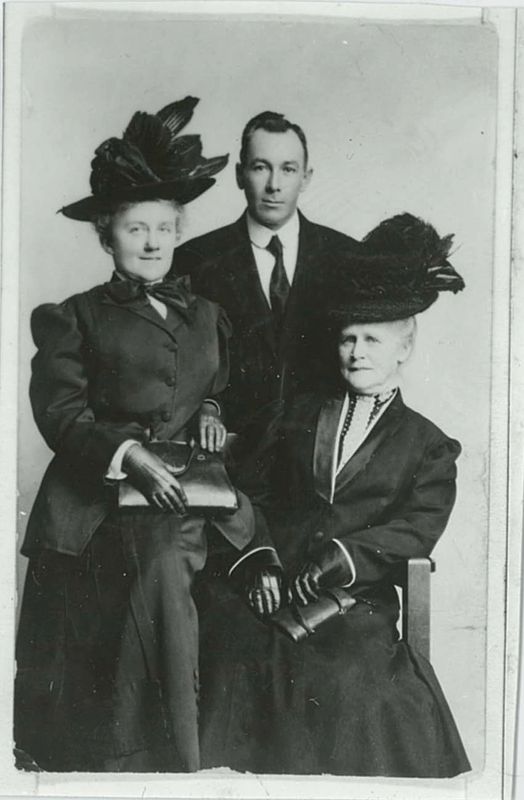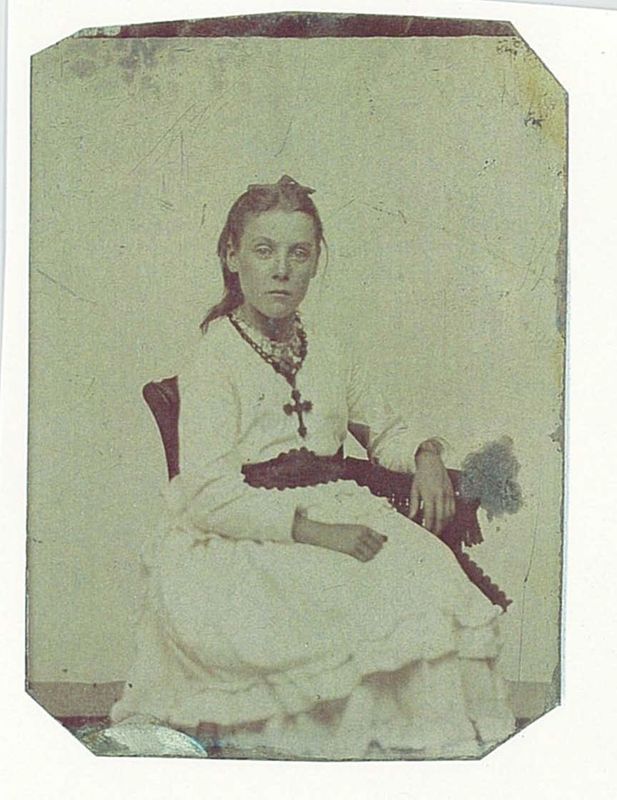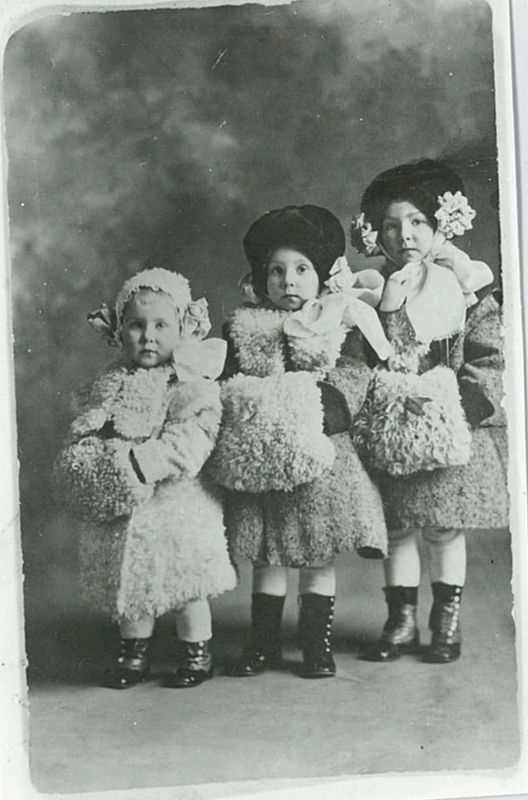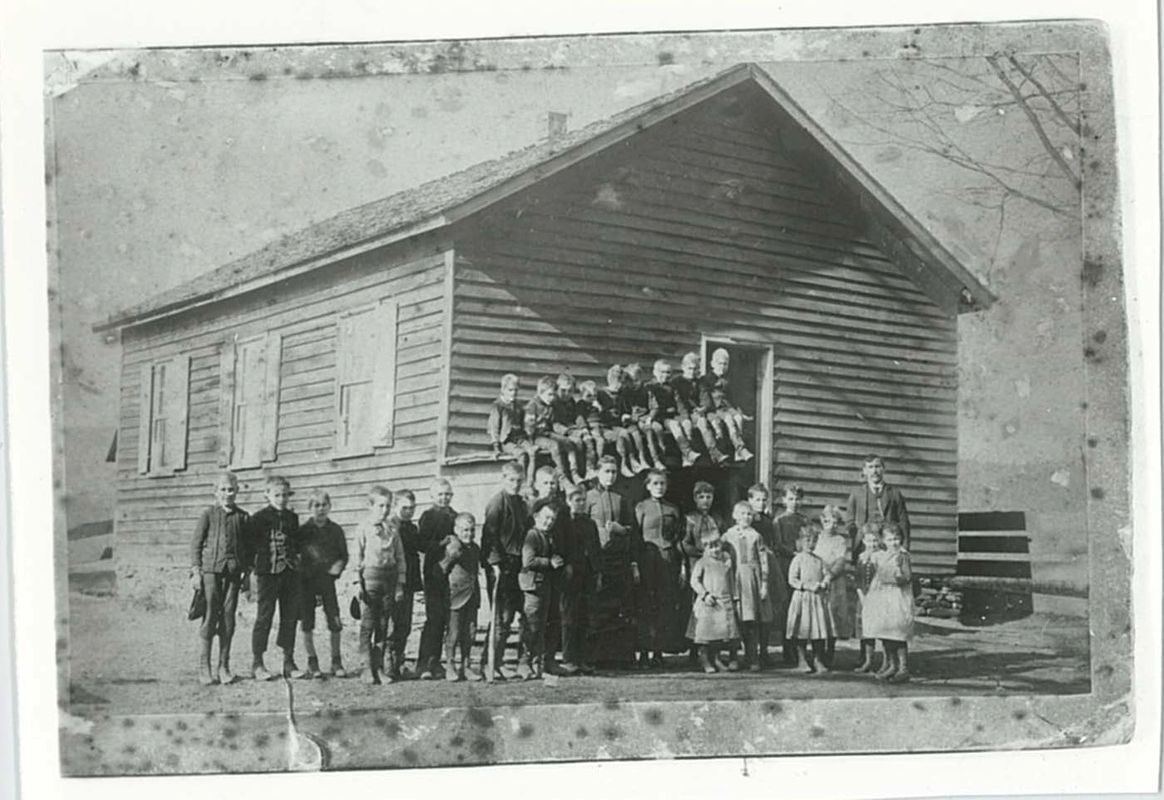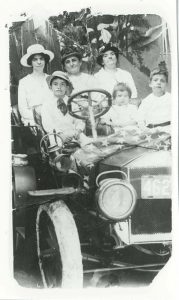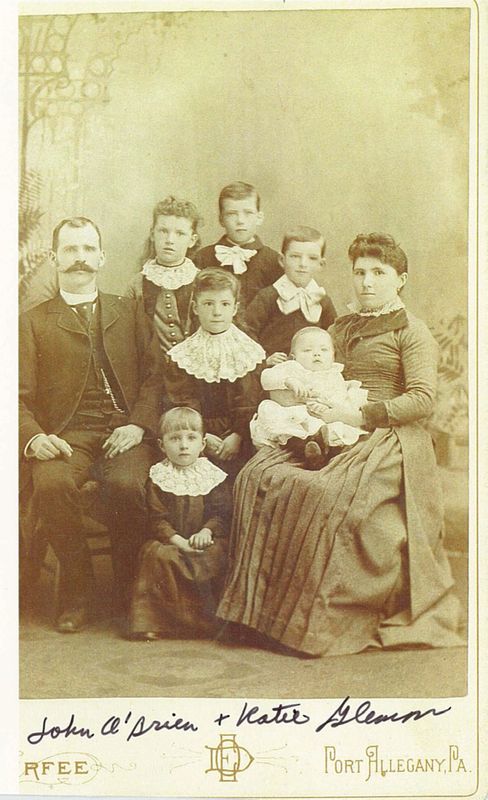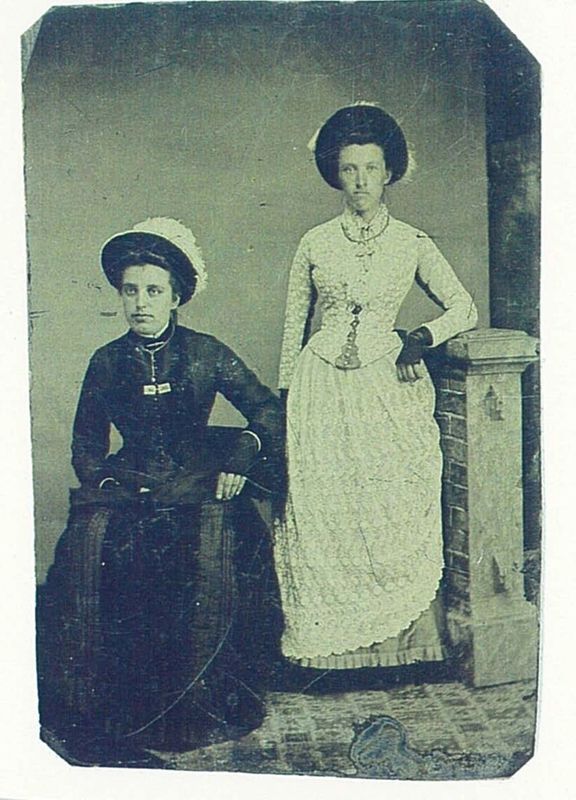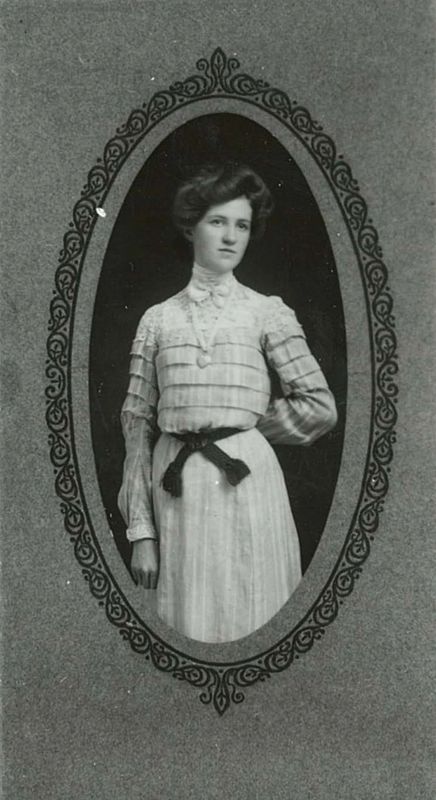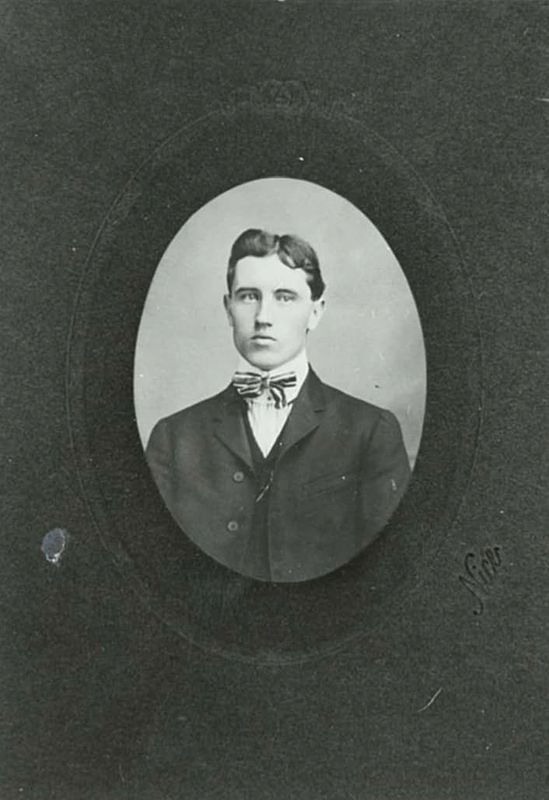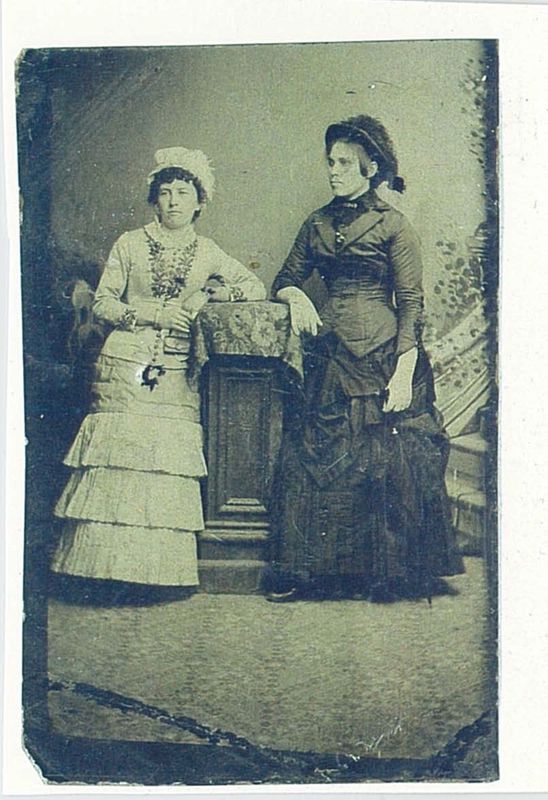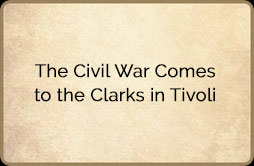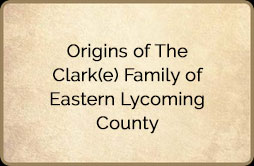Clarke Glennon Family Origins
Who my ancestors were and where they came from.
Legend:
“Meeting” = The name and location of the Quaker Meeting the person belonged to
gr = great, as in great great great grandfather, for example: gr gr gr grandfather = 3 gr grandfather
- = born, m. = married, d.=died
To be done – My life…
- 14 Jan 1933 Lewistown, PA, 5’10”, 165 lbs, eyes blue, hair light brown, more to follow.
Paul Joseph Glennon (1906-1982) my father: b. Nov. 11, 1906 in Jersey Shore, PA. Parents were John A.
Glennon and Hester M. Harris. He was 5’11”, 175 lbs, eyes brown, hair black. He was a very enterprising person. Whenever possible growing up, Paul had a job. My mother remembered him as the milk boy who worked for the farmer who brought them milk in a horse-drawn delivery wagon. His job was to carry a milk can and ladle into, for example, her grandfather’s house at 1224 Allegheny St. and ladle out as much as they wanted to buy that day. My father revealed that one Christmas his present was an orange. In High School, every morning before school he walked a mile to downtown Jersey Shore, opened up Art Woomer’s men’s clothing store and swept it out as well as the sidewalk in front to make it ready for Art when he arrived. After school he walked back downtown and worked in the store until closing.
He graduated from Jersey Shore High School 1926. Paid his own way through two years at Temple University in Philadelphia until 1928 when his money ran out. One of the summer jobs he had was on the railroad ‘track gang.’ This work crew was a back-breaking job with pick and shovel on the railroad under the hot sun and rain but the pay was good for those times. In Philadelphia he had a job at the Whitman Chocolate Co. restaurant in downtown Philadelphia that included dinner. He didn’t eat all day. Walked downtown from Temple, a 4 mile round trip. While at work, he filled his pockets with bread, crackers, etc. to help hold off his hunger until the next time he worked there. While at Temple he and his friends (incl. Irv Poust & George Koons from Jersey Shore) started a local fraternity, Kappa Phi Psi ΚΦΨ. They rented a house on North Broad St. This local group joined a national fraternity as the Temple chapter in the 1940s. My father went back at that time and was initiated into the national fraternity.
When I was younger and visiting Jersey Shore with my parents, my father took me with him when he visited the clothing store where he had worked. It was then owned by Ed Hurst a high school friend of his who took over his job there when my father went to Temple. It occurred to me that having the clothing store in Jersey Shore might have been my father’s life if he had not gone to college.
After returning to Jersey Shore in 1928, a friend called him about a job on the Procter & Gamble Advertising Crew in Philadelphia. He took the job giving out Camay coupons and samples, then after several years he got a job as a Salesman in the Sales Department for Procter & Gamble where he worked for over 40 years up through local Sales Manager in Philadelphia. He married Marian Fineron (1907-2002) of Jersey Shore in 1930. Paul and Marian had known each other all of their lives and both were Catholics in a town where few of them lived. There is a high school picture of them sitting opposite each other on a big rock in Pine Creek when both their families were visiting friends at the village of Torbert. A friend had a camera and said, “Hey” and took the picture when they both turned toward the camera. Marian said that was the day that they fell in love. They also sat next to each other every year in school. After she graduated from high school Marian worked as a telephone operator in Jersey Shore. After college, Paul worked in sale territories for P&G in Lancaster, PA, then Lewistown, PA in 1930 (where I was born in 1933) and Williamsport after that.
After working for P&G for several years, Paul got tuberculosis and was in Camp Devett Sanatorium for ‘Insipient TB’ near Allenwood, PA in the wooded mountains south of Williamsport for a year and then a year resting at home. https://www.northcentralpa.com/dr-devitt-s-dream-part-i/article_76ec1c5d-cd7e-587b-b3b1-e212d2c7e4f7.htmlI
I remember visiting him at Camp Devitt once when I was little. I think with my mother and perhaps Frances and their mother Blanche. At Camp Devett, he and his roommate had a room that looked out over the rear of the sanatorium. Part of the ‘treatment’ was taking a nap each afternoon. While all the patients were doing that, a hearse came to the back door and the patients who had died were driven away. At that point, Paul and his roommate watched out of their window to count how many people had died that day, a dreary piece of information.
Procter & Gamble held his job for him for two years while he was recovering from TB. I have always been impressed and thankful for that kind and responsible action. I am sure that not many companies would have done that. After he was well again, and had rested a year at home, he was put back to work in the Williamsport Proctor & Gamble territory.
During his year at home and when he worked again in his sales job in the Williamsport territory, the family lived at 311 Glover St. in Jersey Shore in a house that was owned by Marian’s parents. George and Blanche Fineron who were living in Albany. Marian’s sister Frances also lived there. One Sunday, Paul’s boss phoned him from Philadelphia and told him that he had a sales territory in Harrisburg that he’d like him to work. Paul said that he liked working in Williamsport, that his family & friends lived there, etc. His boss replied, “I just had to let a salesman in Philadelphia go. He’d like to take that territory in Harrisburg.” Paul said, “Oh, I’ll take it, I’ll take it.“
My parents moved in 1938 to Harrisburg (lived in Wormleysburg across the Susquehanna River from Harrisburg) where I went to first grade in 1939-40. After two years there, Paul was promoted in June 1940 to Philadelphia. They rented in the Avon Apts. for 10 years (now Narberth Station Apts.) at the corner of Avon Rd. and Haverford Ave. in Narberth, PA. Paul was 4-F because of his history of TB and did not have to serve in WWII. They saved their money little by little and after 10 years had enough for a down-payment and bought their home at 519 Baird Rd. in Merion, PA in 1950 for $ 17,500. When I was in the Merion Boy Scout Troop, Paul was the troop committee chairman responsible for arranging transportation of the scouts to and from their monthly camping trip destinations.
I never heard my father curse or say so much as hell or damn. The worst thing I ever heard him say about anyone was to refer to them as “a dirty rotten stinker” and heard him apply that to only two people: Simon Girty, the turncoat & renegade American who deserted to the British in The Revolutionary War, and lead Indian attacks on American settlements including the West Branch Valley. Simon Girty, Sr., the turncoat’s father, lived at or near’ Girty’s Gap’ and the natural formation called ‘Girty’s Face’ on the side of the mountain on the west side of the Susquehanna River across from Millersville. See Wikipedia link: https://en.wikipedia.org/wiki/Simon_Girty. The other person who he referred to as a ‘dirty rotten stinker’ was Kuypens the German spy played by Carl Esmond in the 1941 movie Sundown that takes place in East Africa one of my favorite movies. “Sundown, a time when there’s nothing to do in a country where there’s nothing to do.”
As a P&G Sales Manager he was famous for the number of Salesmen that he trained and developed into management jobs, more than anyone had ever done before. His salesmen smiled at what they called his Glenerisms: sayings that motivated his salesmen to perform. An example is: “The time to sell the peanuts is when the parade is passing by.” In other words, as Benjamin Franklin put it, Carpe diem or seize the moment.
Paul retired in 1969 and worked as a volunteer for ‘Wheels’ driving patients to medical appointments and treatments. Then he worked as a volunteer at Lankenau Hospital. Paul & Marian continued to live in Merion where in 1982 Paul d. of stomach cancer at age 75. He is buried in the Glennon lot in the Jersey Shore, PA Cemetery.
John Andrew Glennon (1879-1959) my paternal grandfather: b. Dec. 24, 1879 on the 60-acre Meehan-Glennon Farm, Catlin Hollow, Niles Valley, Charleston Twp., Tioga Co., near Wellsboro, PA, His parents were Michael J. Glennon (1852-1899) & Catherine Meehan (1852-1930). John was 6’1” tall with very light blue eyes. John’s father Michael called him by a nickname that John remembered as kitog (Irish dictionary: ciotogach). which means ‘lefty’ in Irish. (A man named Paul Glennon who teaches the Irish language in Loughrea, County Galway told me that the Irish word ‘Citeog’ for lefty has survived into the English language as spoken by the Irish today.)
I don’t know how he learned the telegraph, a high tech job of those days. But in 1900, John went to work for the New York Central R.R. and moved as Stationmaster & Telegrapher to Waterville, Lycoming Co, PA where he met Hester Harris (1882-1967) the ‘belle of Waterville.’ After their 1905 marriage in Wellsboro, John was promoted to Jersey Shore, PA. John was a member of the Railroad Telegraphers’ Union for 55 years (1900-1955). In Jersey Shore, John initially worked at ‘The Junction’ an important New York Central Railroad facility, function & property in western Jersey Shore located on the property where the Weis Market is today.
Later, John worked for many years at the ‘J.S. Signal Tower,’ a two-story building next to the tracks near Pine Creek a couple of miles away. From the ‘tower’ he communicated by telegraph and telephone, threw large, five feet high physical switches in the tower that commanded communication signals for the trains. He commuted to work there in all kinds of weather for many years using an open-aired, 3 wheeled handcar (velocipede) that he lifted onto the railroad tracks in the days before he could afford to buy a used 1937 Ford sedan and then a used 1947 red Buick. In Jersey Shore, John & Hester socialized with Ed & Mabel Clarke, Fount Lucas, George & Blanche Clarke Fineron and some others who lived at the ‘top of the hill’ in the Jersey Shore section called ‘The Junction.’ John had asthma which is probably the origin of the pollen allergies in several generations of our family. My grandfather John, my father Paul, I as well as my son Michael all have/had a deviated septum.
When I was visiting my Jersey Shore grandparents, my grandfather John taught me things that a young boy like me wanted to know, like how to catch a fly with your bare hand and other important things. John d. in 1959. In Danville, PA and is buried in the Glennon lot in the Jersey Shore Cemetery.
Michael J. Glennon (1852-1899) my great grandfather: b. about 1852 Glinsk, Ballinakill Civil Parish, Ballymoe Barony, County Galway, on the River Suck (pronounced ‘Sook’) about 10 miles west of Roscommon Town, Ireland. His parents were John Glennon Sr. (1812-1877) & Ellen/Nellie Roane (1822-1868) (Ro-ane, two syllables, accent on the second syllable.). Michael migrated from Glinsk to NY City (have not been able to find the passenger list with them arriving) “with his father John, brother Patrick and sister Bridget after his mother died in January1868” in Culgorive (in Corgarve Townland), Ballynakill Civil Parish, County Galway, Ireland. (The wider Catholic parish of St. Michael’s and the castle of the McDavid Burkes in Glinsk give the larger area the commonly used name of Glinsk the central townland.) After his mother Ellen/Nelly d. in January 1868, Michael came with the first family group of John Glennon Sr’s family to Rondout, NY (Ron-dout) via. NY City joining other family members from Glinsk who lived in Rondout and the New York City area. Initially they lived in Rondout with relatives named Redington. (Rondout today is part of Kingston, NY.) From Rondout the family moved to Newark Valley, Tioga Co., north of Owego, NY, with his reunited family: 1870 U.S. Census, where the family men worked in a tannery. (INPUT FROM JIM LINK’s ADDITIONAL INFO ON NEWARK VALLEY here)
Probably about 1877 after his father died, Michael moved to Wellsboro, PA where he also worked in a tannery (in Antrim, PA?).
He met Catherine F. Meehan (1852-1930), married 1878 in Antrim, a chapel of St. Peter’s Catholic parish of Wellsboro. Catherine was the daughter of Owen Meehan (1815-1888) and Mary Gilmartin (1824-1891). Later Michael was Pennsylvania RR Foreman in Larry’s Creek, Lycoming Co., PA near the Susquehanna River. In 1888, he purchased the farm near Wellsboro from his father-In-law Owen Meehan. Michael d. there in 1899. Michael, Catherine and family as well as Owen Meehan & Mary Gilmartin are buried in St. Peter’s Catholic cemetery in Wellsboro.
John Glennon Sr. (1812-1877) my gr gr grandfather: b. about 1812 in Ballinakill Civil Parish, Ballymoe Barony, County Galway Ireland. Ballinakill means ‘Place of the Church’ in Irish. John’s parents are unknown but there were several possible Glennon families in the Glinsk, St. Michael Catholic Parish who are candidates. The most likely ones were two from the local 1823-35 Tithe Applotment records:
- Luke ‘Glennan, Sunnagh’ (Sonnagh) probable forebearer of the James Glennon who moved from Ballinakill to Rondout ahead of our John Glennon Sr. This James Glennon’s NY State death certificate reports James’ father as Cormac Glennon. James had a son named Luke. He is thought to be a brother or first cousin of our John Sr. by family tradition.
- D(aniel) Glennon who is also listed in the Ballinakill Civil Parish Tithe Applotment records in Sonnagh Townland and Ballinakill/Kilbegnet Tithe Applotment records. This Daniel Glennon is the probable father of Mary Glennon (maiden name) who m. Patrick Glennon of Keelogesbeg Townland, Ballinakill Civil Parish, St. Michael’s Catholic Parish in Glinsk. After Patrick’s death in 1864, Mary took Patrick’s and her children to Milford, Mass. (Mary & Patrick “not related to each other” before their marriage). This Mary Glennon was the God Mother of John Sr. & Ellen Glennon’s’ daughter Ellen. This Mary also, in a letter to Ellen/Eleanor, referred to Ballinakill’s Owen Glennon as a close relative of hers and John Sr’s. Y-DNA tests on their male descendants show that all of these Glennons are closely related. However, it’s likely that Patrick and Mary are a little farther apart from each other than other Glennons in Glinsk.
My gr gr grandfather, John Sr. “could read and write both Irish and English” as reported in a 1936 letter between cousins. Our John Glennon Sr. (1812-1877) m. Ellen/Nellie Roane (Ro-ane) (1822 -1868) (Ro-ane, two syllables) in St. Michael Catholic Parish in Glinsk in 1845 and they had their family there. Her 1868 death certificate said that she was a resident of Culgorive (in Corgarve Townland) Ballinakill Civil Parish. Nellie Roane Glennon was said to have ‘well-to-do relatives.’
After Ellen Roane Glennon’s death in 1868, John Sr., Bridget, Patrick & Michael in the first family group moved to Rondout, NY (Ron-dout) now part of the town of Kingston. NY. They initially lived with relatives named Redington. In Rondout. John joined several related families from Glinsk including James Glennon who was either his brother or close cousin. There are a goodly number of descendants of this James along the Hudson River in Ulster and Greene Counties, NY.
The remainder of John’s children: ‘Mary, Katie, Ellen and Patrick’ came to NYC in 1870 on the ship Nemesis and the family was reported together in the 1870 U.S. Census of Tioga County, NY. This would seem to be a second trip to America by Patrick. The story that Patrick came with the first group is probably correct because it was reported by several family branches and he is listed in the U.S. Passenger Lists as coming in 1870. Maybe Patrick went back to Ireland in order to be with them as they made the crossing to America and shepherd the second group to America.
The missing family member in this list is John Glennon, Jr. the son of John & Ellen. My grandfather told us that John “went off” and was not heard from again. The family assumed that John, Jr. must have died.
In 1870 our family lived in Newark Valley, Tioga County, NY north of the county seat of Owego and the men worked in a tannery. John Glennon Sr. d. in Newark Valley, NY in 1877. John, daughter Bridget Glennon Gallagher (Sean Gallagher family) and some members of their family, are all buried in the Owego Catholic Cemetery.
County Roscommon/County Galway Glennons: My male-line Y-DNA study with Family Tree DNA of Houston, TX, begun in 2001, includes over 100 Glennons and similar names, and has proven that all Glennons who live in or trace their origins to either County Roscommon or County Galway in Ireland are related to each other and descend from one man who lived there many hundreds of years ago. Our Glennons have been shown by yDNA comparison to not be related to Glennons who trace their ancestry to other places in Ireland.
Tracing the origins of the Roscommon/Galway male-line Glennons back through the available Irish historical records including the 1911 and 1901 census, Griffith’s Valuation of Roscommon 1855 & Galway 1856, Tithe Applotment Books 1823-35, Wm. Gacquinn’s Roscommon Before the Famine (Kiltoom & Cam 1749-1843), Marie-Louise Legg’s The Census of Elphin 1749, Seamus Pender’s 1659 ‘Census’ of Ireland, John O’Donovan’s 1843 Tribes and Customs of Hy Many and John O’Donovan’s Ordinance Survey Letters – Field Books 1837. The manuscript copy of the Field Books is at the Royal Irish Academy Library in Dublin and is available online at the Academy’s website. I have the other books mentioned above in my personal collection. The available histories written in Irish were researched, translated and in the case of The Tribes and Customs of Hy Maine was published in a book by John O’Donovan in 1843 and in the case of the longhand Field Books in 1837 in English are available on the Internet.
The Hierarchy of Ireland places first the High King of all Ireland (think Brian Boru of Tara). He is elected from the Irish regional Kings like the O’Connor Kings of Connacht whose castle is still on the Galway/Roscommon border today. Within Connacht the O’Kellys are Princes of Hy Many, southern Co. Roscommon and eastern Co. Galway, within their territory there were seven Lords who were Flaiths or governors one of which was MacGillEnan who with Kelly was .
The bottom line for the Roscommon-Galway Glennon families is that they were Lords one level below the O’Kelly Princes of Hy Many (southern Co.Roscommon and eastern Co. Galway) is that they descend, most remotely, from MacGillEnan a Hy Many Lord who probably earlier than about 1200 AD along with Muinter Chinaith (Kenny) were chiefs of Clann Flaitheamhuin, one of the seven Flaihs (lords or governors) of Hy Many. MacGillEnan translates to Mac ‘son of,’ Gilli ‘follower or devotee of’ Enan, ‘St. Enan.’ The local Glennons in Ireland report that the Glennon name began in the Civil Parish of Taughmaconnell, Barony of Athlone in southern County Roscommon, and spread out from there. Some Co. Roscommon Glennon and County historians report that the surname originates in the townland of Onagh in Taughmaconnell Civil Parish. The reference to MacGillEnan is from page 75 of John O’Donovan’s 1843 translation of The Customs and Tribes of Hy Many, a manuscript in the collection of the Royal Irish Academy Library on Dawson St., Dublin. John O’Donovan’s Field Books written in English longhand in 1837 at the time of Griffith’s Valuation are currently available on the website of the Royal Irish Academy in longhand and list our family name as Mac Gillenan in southern county Roscommon.
The author and date of the Tribes and Customs of Hy Many is not known but John O’Dugan (d. 1372) who filled the role of historian for the O’Kelly princes of Hy Maine in counties Roscommon and Galway and is quoted in this book.
The days of the preeminence of this McGlennon family in Taughmaconnell is in the remote past. For example, historian John O’Dugan who d. 1372 reports that Mac Eochy or Keogh of the Ui Maine flourished in 1290 and that they were chiefs of Omhanach, now Onagh Townland, in the Civil Parish of Taughmaconnell. This would seem to place the Glennons’ origin there, perhaps before that, 1200 AD?
To oversimplify Irish History, in 1170 Strongbow, Richard de Clare (1130-1176) the Anglo- Norman nobleman of France and England, came to Dublin, Ireland at the invitation of Dermot MacMurrough, King of Leinster to invade Ireland and aid him in a dispute. King Henry II of England shortly after this, invaded Ireland South of Dublin to maintain sovereignty over Strongbow. From this start, the Anglo-Normans over a period of centuries took control of Ireland from East to West. In the country West of the River Shannon this included a number of huge battles that laid waste to the country in particular O’Kelly’s Hy Many. South County Roscommon came under stronger English domination with the building of a castle at Athlone in 1213, a few miles away from Taughmaconnell, the probable reported to be the place of origin of the Glennon name.
Owen Meehan (1815-1888) b. Ireland, place unknown, arrived NYC before 1850, married Mary Gilmartin in NYC before 1850 either in County Sligo or NYC, moved to Wellsboro, Pa, from NYC after 1857. Their daughter Catherine Meehan b. NYC 1852 m. the above Michael Glennon in the Antrim chapel of Wellsboro’s St. Peter’s Catholic Chruch in 1878. Owen Meehan sold his farm to his son-in-law Michael Glennon in 1888.
Mary Gilmartin (1824-1891) b. Ireland, County Sligo, Ahamlish Civil Parish, to NYC before 1850, not clear where she m. Owen Meehan. Moved to Wellsboro, PA from NYC after 1857. Ahamlish is the home of the Gilmartin name in Ireland.
XXXHester Martha Harris (1886-1967) was my paternal grandmother: My father Paul Glennon was the only child of his parents, John A. Glennon and Hester M. Harris. Hester was b. May 7, 1886 in Waterville, Pine Creek Valley, Lycoming Co., PA, daughter of Reuben J. Harris (1847-1926) & Martha A. Conner (1854-1890). Hester was the sixth generation of her family to live in Waterville. She was about 5’7” tall and had brown hair and dark brown eyes. Hester had a twin brother Reuben Joseph and they were the second set of twins born to her parents. Her parents were second cousins of each other. Hester and John were married 21 June 1905 in Wellsboro.
Hester’s mother d. when Hester was 4 years old. Her father Reuben owned and operated a lumbering company. In the Winter he was away from home for months at a time. After her mother’s death, Hester was much of a waif for a time.
She told me of an instance when she was a little girl and was staying with a related family on the west bank of Pine Creek at Waterville. Her father came to the east bank and called across the creek and the people she was living with put her in a rowboat and told her to row over to her father on the east bank. Pine Creek was running very high with chunks of ice going by. She was terrified but had to do it anyway.
Her young cousin, Billy Bennett felt sorry for her general situation and asked his mother Sarah English Bennett, a friend, neighbor and cousin of Hester’s mother, “Can’t you take (care of) Hester?” Sarah took Hester into her family in Waterville and raised her. (I believe that the Bennetts lived on English Island/Bennett Island, originally the home of John English and Fanny Boatman.) Hester grew up to be the ‘belle of Waterville’ and in 1905 m. John Glennon the handsome new Stationmaster and telegrapher in Waterville and became a Catholic in the process. She took the train to Wellsboro to get instructions from the priest there.
Her early trauma created anxiety later in life. She d. in Williamsport in 1967 and is buried in the Glennon Cemetery plot in the Jersey Shore Cemetery.
As a comment on the caretaker in of the Harris children in Waterville in their father’s absence, Hester’s older sister Lilly Harris Lloyd, mother of our cousin Ruth Shurr, after her marriage, came back to the Reuben Harris house near the Church in Waterville and knocked on the door. When the caretaker came to the door, Lilly Harris Lloyd “hauled off and socked her in the face. Then turned and walked away.” Story told by Lilly’s daughter Ruth Lloyd Shurr.
Hester died age 81 in Williams Nursing Home in Williamsport 14 September 1967 and was buried in the Glennon lot in the Jersey Shore Cemetery.
Reuben Jacob Harris (1847-1925) my great grandfather was the father of my grandmother Hester Harris. Reuben was b. 1847 in Waterville, Pine Creek Valley, PA. second child of Jacob B. Harris and Eliza Bitter. On June 12, 1872, Reuben m. his second cousin, Martha A. Conner (1854-1890) daughter of John B. Conner & Lilly Work of English Mills just five miles to the north of Waterville on Little Pine Creek. Both of Reuben and Martha’s grandmothers, Margaret & Elizabeth English, were sisters and daughters of John English (abt. 1752-1846) and Fanny Boatman (1755-after 1830). See their information nearby.
Reuben had a lumber company that he took into the woods every Fall and all Winter to cut and trim trees to take to Williamsport in the Spring and sell to the sawmills on the Susquehanna River there. The lumbermen built a large building in the woods for his crew’s sleeping and eating. They built a series of dams on the local streams and runs to catch the melting snow and spring rains. Horses dragged the felled and trimmed trees to the ponds behind the dams. At the right time on the Spring flood, they knocked out the dams and guided the logs into Pine Creek below, a very dangerous job. Each log was branded with the name of the Reuben Harris company so that Reuben would be paid when they got to Williamsport and were processed in the sawmills.
At that time of the year, the lumbermen built different kinds of rafts on Pine Creek that were called ‘arks.’ My grandmother Hester Harris Glennon described horse arcs, cooking arcs, arcs where the lumberjacks lived, etc. On the Spring flood, they rode the floating arcs and logs to the Susquehanna River 12 miles down Pine Creek from Waterville, jumping from one to the other to keep them moving and not jammed up or cast up on the banks of Pine Creek. There were a number of lumber companies doing this at the same time. I can only imagine the sight of the several companies together bringing their logs out of each of the major creeks going into the larger Susquehanna River. Williamsport was about 12 miles below the mouth of Pine Creek at Jersey Shore. Lumber crews from other tributaries were also bringing their logs. It must have been an amazing sight. There was a huge floating boom across the Susquehanna River at Williamsport that caught the floating logs and guided them into the 80 sawmills there. The process is described on the Internet here: https://en.wikipedia.org/wiki/Susquehanna_Boom
As his company’s logs were processed by the sawmills, Reuben was paid and, in turn, paid his workers and the bills incurred in the process of the lumbering. A lot of money passed through his hands while this was going on. My father told me that, in the years after Reuben’s wife Martha died, his grandfather stayed down in Williamsport and lived the high life until his money was gone. Only then did he return to Waterville. (One can imagine: ‘wine, women and song.’)
Reuben Harris d. Sept. 6, 1925 in Jersey Shore Hospital. He had been being cared for in Jersey Shore at the home of his daughter Hester and her husband John Glennon. He was buried in the ‘new’ cemetery in Waterville on Little Pine Creek with his wife Martha Conner Harris and their son Oliver (1874-1879). My father described his grandfather Reuben as a ‘pioneer’ who wore knee high leather boots that laced all the way up to the knee. The men wore these because of snakes in the woods. My father told me that when his grandfather lived with John & Hester’s family, he didn’t have any teeth and chewed his food on the bones in his mouth. I asked cousin Ruth Shurr what her grandfather was like and she answered, “He kept himself clean.” I’m sure that many of the men who were accustomed to working in the woods did not, but her reply was more revealing about Ruth who was always a tidy and very clean-scrubbed looking person.
Reuben Harris’ wife Martha Conner (1854-1890) (not ‘Conners’) my great grandmother was b. October 31, 1854 in English Mills, a small village five miles up Little Pine Creek from Waterville, and presently just below the site of a huge flood control dam and recreation area. Martha was the daughter of John B. Conner (Feb. 28, 1816-May 9, 1891) and his second wife Lilly Work (April 3, 1816-Nov. 23, 1881) who were m. Sept. 29, 1847. Lilly’s parents were ‘Henry Work and Lily his wife’ of (adjacent) Northumberland County. The origin of this PA Work family is in the Scottish Orkney Islands immediately north of mainland Scotland.
Martha’s father John B. Conner was the oldest child of Abbis Conner, who was very probably born in Ireland and Elizabeth/Lizzy English who was b. about 1790 on the Island in Waterville. m. about 1815. Elizabeth was the daughter of John English and Fanny Boatman and was b. on English Island in Waterville. See their information below. The John Conner family is buried in the English Mills Cemetery located in the middle of the camping grounds in the Little Pine State Park at the base of the flood control dam.
A book, The History of the Work Family Volume I published 1984 by Von Gail Hamilton gives background on this Work family of the Orkney Islands, part of Scotland just off its northern coast. A facsimile copy of Volume I 1984 and Volume 2 1994 I believe are available in the library of the Historical Society of Pennsylvania at 13th & Locust Streets. in Philadelphia. This book features the descendants of Henry Work (1680-1738) who d. in Lancaster Co., PA. Our specific Work family members are not mentioned. The description in this book implies that the featured Henry Work (1680-1738) is a descendant of the first Henry Work who came to PA earlier. I’d like to know more about that.
Emma Work who worked for Procter and Gamble in their Philadelphia office was a member and genealogist of this family. She traveled to the Orkney Islands and talked to Works who live there today. She told me that one of these Works told her that the local Balfour family had stolen the family crest of the ancient Work family. The family crest of the Balfour family of the Orkneys is available in books and probably on-line. It is rendered in stone on their home in the Orkneys.
Jacob B. Harris (1815-1860) my gr gr grandfather was the father of Reuben Harris. Jacob was b. Oct. 15, 1815 in Waterville, Pine Creek Valley, PA the son of Abraham Harris and Margaret English. In about 1845, Jacob m. Eliza Bitter (1825-1898) the daughter of Joseph Bitter (1797-1852) from Reading, PA, postmaster of Waterville, who was b. in Switzerland and his wife Anna M or Amelia of Reading, PA (abt 1802- ). (gravestone is hard to read, check with Waterville 1850 Census.). Jacob Harris d. June 17, 1860 at age 44 and is buried in the Cemetery behind where the Methodist Church used to be. His grave is marked with a tombstone probably put there by his father Abraham Harris. Jacob’s widow Eliza Bitter Harris in later years remarried to Thomas Bonnell (1817-1897) of Waterville (son of George) as his third wife. The correct surname is Bitter without an ‘s.’ (See the tombstone in Waterville Church cemetery.) However, the name is pretty universally pronounced ‘Bitters’ in the area. That’s how my father Paul pronounced his grandmother’s name. But Bitter without an ‘s’ is correct.
My 3 gr grandparents Joseph (abt.1797-27 Jan 1852 & Amelia Bitter (abt 1802- ) Check 1850 census, Came to Waterville in the Pine Creek Valley from Reading, Pa and Joseph from Switzerland originally. Their daughter Eliza Bitter (my 2 gr grandmother) m. my 2 gr grandfather Jacob Harris
Abraham Harris (about 1777-1863) my 3 gr grandfather was the father of Jacob B. Harris. Abraham was
born in NJ and came to Lycoming County, PA after serving as the carpenter’s yeoman onboard the American Frigate the USS President 1801-1802 in the Mediterranean in the War with the Barbary States. In 1802 he settled in Waterville PA where in 1803 or 1804 he m. Margaret English (1783-1873) the daughter of John English and Fanny Boatman.
Abraham was a PA Militia Captain in the War of 1812. He was a prominent, well-educated and well-to-do man in the Waterville community. Abraham could both read and write. He and his wife Margaret had a large family. He d. in Waterville in 1863 and is buried in the cemetery behind the place where the Methodist church used to be. His wife Margaret English d. 1873 in Jersey Shore at the home of her son Winfield Scott Harris and is buried in the Jersey Shore Cemetery. Her gravestone was also placed there more recently by Larry Harris and another of our cousins. See Abraham’s obituary in the West Branch Weekly of 10/3/1863: died “early in the morning of Saturday, Sept. 19” (1863).” in the 87th year of his age . . . Consider putting in the whole short obit. . . . Rest weary traveler, rest.”
There is a gravestone for Abraham in the Waterville Church Cemetery. However, it was not placed there at the time of his death but rather recently by my cousin, Larry Harris. I believe that it incorrectly lists Abraham’s middle initial as ‘Abraham P. Harris.’ While he was living, Abraham always reported his name as plain ‘Abraham Harris.’ Abraham P. Harris is the name of one his and Margaret’s sons. As a result, Abraham was occasionally referred to as Abraham P. Harris Sr. My opinion is that that son’s middle name could well be ‘Perry’ after Oliver Hazard Perry. Abraham seems to favor the names of prominent military heroes of his day like his son Winfield Scott Harris. My own ancestor Jacob B. Harris’ middle name may have been Jacob ‘Bainbridge’ Harris in that same pattern. This is purely conjecture. All three of these sons of Abraham and Margaret were born and named near the end of the War of 1812. Larry Harris and I discussed the issue of Abraham’s ‘middle initial’ but Larry took his own counsel.
When Abraham learned that he could be awarded free ‘bounty land’ for his service in the Barbary Wars, he applied to the Federal Government in Washington, DC: however, they replied that there was no one on the roster of the USS President named Abraham Harris. Abraham wrote back that he served under the name Abraham Herrick a name that it turned out WAS on the ship’s roster; and so, he was awarded the Bounty Land. The fact that he had changed his name was a big surprise to me. About this time, a second-cousin once-removed of mine surnamed Harris who lives in North Carolina had taken a male-line yDNA test at Family Tree DNA and was finding that he wasn’t related to anyone surnamed Harris but rather WAS related to men named Herrick. This reconfirmed that Herrick was Abraham’s birth name and our yDNA pattern confirms that we are descendants of Massachusetts pioneer Henry Herrick (1598-1671) b. in England about 1598. About his date of death: H. Herrick’s Will dated 25 Nov. 1670 was proved 28 March 1671 Beverly, Mass. Because our Harris family carries a particular yDNA mutation that only Henry Herrick’s son Ephraim’s line has, we descend from that son. Ephraim Herrick was b. before 1638 in Mass. and d. there in 1693. Who will be able to discover our line of descent from Ephraim Herrick to our Abraham Herrlck Harris?
Abraham Harris was b. about 1777 in New Jersey according to several records he made. An oral story in one of his Harris descendants’ families in Waterville was that Abraham came from “Always” NJ. This sounds a lot like the town of Alloway in Salem County NJ. Incidentally, several members of a Harris family living there, including an Abraham, are recorded as Militia serving in the 1778 Revolutionary War battle of Quinton’s Bridge that was fought there. Did Abraham assume his Harris surname from his mother’s side rather than his father’s name Herrick? Is that the place in NJ where Abraham came from? My quick check didn’t turn up any Herricks listed in that area of NJ. If Abraham’s father could be identified, it might be possible to trace his line of descent back to his Herrick place of origin in Mass.
John English, (abt.1752-1846) my 4 gr grandfather whose family origins are reported to have been in Ireland either directly or, more likely, historically through his personal family history. Clues point to a probable origin in Berks County where an English family lived and where John’s first military service in the Revolutionary War was recorded. The surname ‘English’ also occurs in the Quaker Meeting of County Carlow, Ireland. Also, a Joseph English came to Philadelphia on board The Society in August 1682, Thomas Jordan of Bristol, Master. This ship was part of ‘Penn’s Fleet’ of 1682, and so that Joseph English’s’s proven descendants are eligible for membership in the ‘Welcome Society.” Also, a different Joseph English had settled in nearby western NJ a few years before the arrival of William Penn’s Fleet in 1682. Both Joseph Englishes are in the records around Philadelphia. Historians knew and commented that there were ‘two Joseph Englishes.’ Tracing John English’s family back to his family’s emigration to America still remains to be discovered.
My family’s John English was very likely born in Pennsylvania about 1752, probably in Berks County. His military service at the beginning of the Revolutionary War was from Berks County in 1776. He later served in the PA Continental Line. I am a member of the Sons of the American Revolution based on his service. My descendants can join the SAR or DAR very easily by tacking onto my membership and proving descent from me.) John was later a Revolutionary War pensioner. In his daughter Margaret English Harris’ 1873 obituary, it says: “Her father, John English, was a soldier of the Revolutionary War, and fought under the banner of the dashing Mad Anthony Wayne.” The obituary also says:
John English was with Washington’s troops when they crossed the Delaware River on the night of December 25-26, 1776 and launched a successful surprise attack on the Hessian troops in Trenton, NJ.
John English was with Washington’s army at Valley Forge the very cold winter of December 1777 to June 1778. This is proven from troop rosters at Valley Forge.
John English also witnessed the hanging of Major John Andre the British spy on May 2, 1780 at Tappan, NY. Major Andre was the British officer who was captured carrying confidential plans of American Fort Ticonderoga on Lake Champlain given to him by American General Benedict Arnold.
John English’s service in the Pennsylvania Line was with his brother James and sister Rebecca who was in the accompanying support services (baggage train). Both of them also settled on Pine Creek. Rebecca English m. Daniel Callahan who served with the Englishes in the War. Another brother, William English, served in the Northumberland Co., PA Militia, ‘Rangers on the Frontier’ in the 1780s and settled on the West Branch after the war. Before the establishment of Lycoming County in 1795, the West Branch Valley was part of Northumberland County.
Fanny Boatman (1755-aft. 1820 or1830 check census records) John English’s wife Fanny was my 4 gr grandmother. I am not certain where she was born but she was baptized in New Rochelle, NY 26 September 1755 as Francoise (=Frances / Fanny) in the French Huguenot Church in New Rochelle, NY. Her parents were recorded as Claude and Marie Bouteman on the baptismal record. The name Bouteman is also on the Huguenot Monument at New Rochelle, NY. Consequently, we are eligible for membership in the Huguenot Society.
Fanny Boatman was with the family as she and her siblings grew up and moved from place to place with their parents. The first records that show the Americanization of their family name from Bouteman to Boatman are the muster rolls of the Westchester Co. NY Militia. There Claudius Boatman was listed as a member in 1759 and 1760 in the French and Indian War. Consequently, our family members are eligible for the French & Indian War Society.
The next place where I know that Claudius and his family lived is in Warwick, Orange County, NY in 1765 and 1775 when Claudius made records there.
By 1778 Claudius and his family were living in Pennsylvania in the area of the West Branch of the Susquehanna River above the Muncy Hills where, at Muncy, PA, Claudius, along with his son-in-law Comfort ‘Wanerer,’ signed the June 10, 1778 petition to the Supreme Executive Council of Pennsylvania for relief from Indian attacks. That summer, attacks intensified and the family became part of the ‘Big Runaway’ in 1778 that emptied the West Branch of settlers. Fanny Boatman experienced all of this.
John English re-appears in the West Branch settlements in early 1781. I surmise that he was one of the 1250 members of General ‘Mad’ Anthony Wayne’s Pennsylvania Line who had served the three years that they had agreed to when they enlisted and, in brief, negotiated to leave the Army on good terms which they did on January 29, 1781 (Google: ‘The Pennsylvania Line Mutiny’ for more information). Only 1,150 of General Wayne’s men stayed. The troops of several other states tried to do the same thing after the Pennsylvanians but were prevented from leaving. I believe that John English was one of these Pennsylvania Line troops who left the army at that time because of other dates recorded in the family: the marriage of John English and Fanny Boatman and the birth of their first child John in 1781, followed by the birth of their son James in 1782 and Margaret in 1783. These things all fit and testify to the fact and reason that John English was not with Washington’s Army in the final 1781 southern campaign when General Cornwallis surrendered at Yorktown, Virginia.
In addition to these events, John English, in his 1820 application for a Revolutionary War pension, said that his discharge from the American Army was about early February 1781 (fitting the date above) and that he sent his discharge papers to Philadelphia in order to get some back pay that was due him. The discharge papers were “not returned” to him. Hopefully the money was. Perhaps this money covered the purchase price of the English Island land where John & Fanny settled on Pine Creek near Jersey Shore, PA in 1784 or 1785
John’s siblings James and Rebecca English who served in the Continental Line with John also came to the West Branch area after 1781. (James English m. Jane Boatman the sister of Fanny the wife of his brother John and also the daughter of Claudius & Marie/Mary Boatman. John & James’ sister Rebecca m. Daniel Callahan who her brothers served with. All of them settled on Pine Creek.) The handed down traditions were that the Englishes had lived on Silver Island in the Susquehanna River near Sunbury. John English settled for a time on ‘Bailey’s’/‘Long Island’ across the Susquehanna River from the present location of the town of Jersey Shore, PA. Margaret English, the daughter and third child of John & Fanny, was on record saying that she had been born on that island in 1783. A possible clue about the name of the father of John, James, Rebecca and William English is the fact that the oldest son of both John and James English was named John.
John English, Fanny Boatman and their family were the first settlers in 1784 in the Pine Creek Valley, locating on the 27 acre ‘English Islands’ just south of where the village of Waterville now stands.
John English (abt.1752-1844/46) and Fanny Boatman (1755-aft1720 or 1730) were the parents of a large family that included both Margaret English Harris (1783-1873) who married Abraham Harris and Elizabeth/Lizzie English Conner (abt.1789/90-___) who m. Abbis Conner. The grandchildren of these two daughters of John and Fanny: Reuben J. Harris (1847-1926) and Martha A. Conner (1854-1890) were married by Rev. John H. Grier of Jersey Shore Presbyterian June 12, 1872. Their grandmothers Margaret English Harris and Elizabeth English Conner were sisters making Reuben and Martha second cousins.
John English was a Revolutionary War pensioner who d. in 1844/46 at the home of his daughter Sarah Ramsey and husband Thomas at the settlement at the village of Ramsey three miles south of Waterville. Both John English and Fanny Boatmen English are buried on the island in Pine Creek where they made their home. John English has a marker placed there by the Fort Antis Chapter of the Daughters of the American Revolution. Claudius Boatman and his second wife, Esther __ are also buried there, but only Claudius has a marker that was commissioned by the Sons of the American Revolution. Thomas & Sarah English Ramsey are also buried there but only Thomas’ grave is marked also as a Revolutionary War veteran. Other family members who family tradition says were buried there: include Lizzy English Conner, Abbis Conner, William Hamlin and others.
Claudius Bouteman/Boatman (1728-1819) and his wife Marie ( -1782), my 5 gr grandparents were parents of Fanny Boatman (1755-aft1830) who m. John English. The Boatmens were from France. The Boatman family settled in and made records in New Rochelle, NY where their daughter Francoise/Fanny was baptized in 1755 and also with Claudius’ Westchester Co., NY Militia service in the French & Indian War 1759 & 1760 establishing residence there those years.
In his French & Indian War record of service, Claudius’ birthplace was recorded to have been France, occupation a cooper and his year of birth as 1728. He spoke with a strong French accent that influenced the way that his name Claude was recorded by English speakers, Cloud and Gloud are examples.
In 1765 Claudius was baptized in the Old School Baptist Church in Warwick, Orange Co., NY and in 1775 he was listed in the Warwick tax records. These records establish that the Boatman family lived there at least between those dates. This is probably where Comfort Wanzer of Dutch ancestry m. Claudius and Marie’s oldest child Mary Boatman.
June 10, 1778 in Muncy, PA, “distressed residents of the West Branch of the Susquehanna River above the Muncy Hills” petitioned the Pennsylvania Supreme Executive Council for help in defending against Indian attacks. This petition was attested to, among others, by Claudius Boatman, and his son-in-law Comfort ‘Wanerer’ establishing the fact that the Boatman family lived in the Susquehanna Valley above the Muncy Hills in 1778.
The Big Runaway: By early July 1778, a number of settlers west of the Muncy Hills had been murdered by Indians. In response, the survivors were gathered together in local strongholds like Antis Fort (Jersey Shore), Reid’s Fort (Lock Haven), Fort Horn (McElhattan opposite Chatham Run) and others. A large force of Indians, Tories and British was descending on the West Branch settlements and Colonel Hunter at Fort Augusta sent word to Colonel Hepburn on the West Branch for everyone to fall back to Fort Augusta near the present Sunbury. The whole inhabited West Branch Valley was vacated at once using rafts, boats, canoes, anything that would float reportedly even including hog troughs. The women and children poled, dragged and rode the rafts in the river and armed men walked along the shores as guards. In a matter of days, sixty miles of the West Branch of the Susquehanna Valley was completely devoid of settlers. The Indians burned the crops and their homes, barns and improvements.
(Actions like this and the July 3 Wyoming Massacre at Forty Fort on the North Branch of the Susquehanna River foreshadowed the retaliatory invasion and destruction of the Iroquois homeland in upper New York that George Washington directed General John Sullivan and 5,000 troops to carry out in 1779. The troops burned everything in and around the Iroquois villages and even chopped down their fruit trees.)
Even while the settlers were down-river, there were still Indian attacks. “On August 16, 1782 about 60 or 70 Seneca warriors attacked the home of Major John Lee killing about 15 people. One of those killed was Marie/Mary Boatman the wife of Claudius Boatman. In addition, their daughter Rebecca Boatman, about 14 or 15 years old, was scalped in the attack but lived. She was left with sensitive scars on her head and wore a silk cap thereafter to hide and protect them. (Rebecca later married Revolutionary War Veteran Isaac Smee and they had a family on Pine Creek.) The place where this Lee Massacre happened was at the present village of Winfield, a settlement on the west bank of the West Branch of the Susquehanna River, about five miles north of Fort Augusta. (There is now a PA Historical Marker at Winfield titled “The Lee Massacre” commemorating this tragedy). In 1782, the Boatmans had relocated downstream to the region of Fort Augusta, but even being there, had not keep them safe from Indian attacks. The records of the 1780s era Northumberland County Militia called Rangers on the Frontier included family members Claudius Boatman, Sr, Claudius Boatman, Jr. and Comfort Wanzer as well as the English family’s William English.
There are several published reports of the Lee Massacre passed down by families of people who were there. One especially interesting report was that a young girl named Katy Stoner ran upstairs and hid behind the chimney. Another version was that a girl named Susan Edgar hid under an overturned kettle. One of the retellings of the published reports had it that the girl(s) who hid was a member of the Boatman family. I re-read the reports and see that one of our earlier ancestors added the part about the girl or girls being members of the Boatman family.
The first settlers in the Pine Creek Valley were John & Fanny English and family on the Island at the present Waterville in about 1784. John and Fanny’s fifth child, Claudius English was the first white child born in the Pine Creek Valley in about 1785.
Claudius Boatman’s family and his second wife Esther ___ were among those who followed the Englishes ‘to Pine Creek in about 1785.’ Their son William Boatman was the first white child to be born in McHenry Township in 1785. The most likely accurate date of death of Claudius Boatmen Sr. is 18 May 1819 near Waterville. This date comes from the application of his ‘daughter’ (or more likely his daughter-in-law?) Nancy Boatman for a pension on her ‘father’s’ Revolutionary War service. This request was denied since children of veterans were not eligible.
Elizabeth/Lizzie English my 3 gr grandmother was reported in family records to have been b. on English Island in Waterville about 1789-80, the daughter of John and Fanny Boatman English. Like her sister Margaret English Harris, Elizabeth too was a daughter of John English and Fanny Boatman. Family history reports that Lizzie m. Abbis Conner about 1815. Abbis is an unusual and even questionable name; however, there is a record in the Lycoming Co. deeds of a purchase by an ‘Abbis’ Conner in Waterville in 1815. As I recall, the purchase was aided somehow by Abraham Harris, husband of Lizzy’s sister Margaret, who was rather prominent in Waterville and well-to-do. To try to understand Abbis‘ name better, Abbis’ and Lizzy’s older son John B. Conner (my 2 gr grandfather) was named John after Lizzy’s father John English. John Conner’s middle name was Bruce and John B. Conner had a grandson named J. Bruce Shellenberber a great grandson named Bruce Clarke and a gr gr grandson named J. Bruce Glennon. The other known son of Abbis and Lizzly Conner was Elisha Conner, a biblical name. My good friend and 3rd cousin Elaine Clarke Hawkins is related to me through this Conner family. John Conner’s first child of three by his first wife Emily Campbell was named Abner after Emily’s father Abner Campbell. None of these Conner names seem to be related to the name Abbis. Abbis doesn’t appear in the Census records but I think that he and Lizzie are numbered but not named in the early censuses of John English’s family on English Island. John Conner and his brother Elisha Conner first appear in the censuses of 1840 and 1850 in the village of Cammal on Pine Creek a few miles north of Waterville. The dates of death of Abbis and Lizzie English Conner are unknown. However, the dates of birth and death of John and Lilly Work Conner are recorded on their tombstones in the English Mills Cemetery and in the Conner Bible which has been preserved.
In one of John English’s Pension applications, he is quoted as saying ‘my daughter Fanny lives with me’ but there is no other record of a daughter named Fanny. John was not literate and I think it’s possible that the person taking down John’s oral statement may have confused the name Fanny, John English’s wife, with John’s daughter Lizzie. My opinion only, but it’s logical and fits the facts.
Our family in this line comes down through the parents of Martha Conner who m. Reuben Harris: John B. Conner & his wife Lilly Work. Lilly was the daughter of “Henry and Lily Work of Northumberland County” (my gr gr grandparents. John Conner lived in the village of Cammel on Pine Creek in 1840 and 1850 and by 1860 had moved to English Mills on Little Pine Creek. The Pennsylvania Work family was from the Scottish Orkney Islands where family members posit an earlier Scandinavian origin. The Conners are buried in the English Mills Cemetery.
A book the History of the Work Family by Von Gail Hamilton outlines the early history of the Work family of the Orkney Islands. Available at the Historical Society of PA.
Relocate to the Lloyd family xxxxxxxxxxx I have a photocopy of Pride Prejudice and Politics (A History of the Lloyd family in Wales, Pennsylvania and Ontario.) Part II The Pennsylvania Years by Richard Douglas a book that is available in the Swarthmore College Friends Historical Library in Swarthmore, PA. See William ap Edward >Lloyd..> Clarke.
Marian Genevieve Fineron (1907-2002) my mother was b. on March 4, 1907 on Allegheny Street in Jersey Shore, Lycoming County, PA, the daughter of George H. Fineron and Blanche I. Clarke. Marian had two sisters Genevieve F. Fineron (1908-1919) and Frances I. Fineron (1910-1944). Marian d. on June 18, 2002 in her home at 519 Baird Rd., Merion, PA. Marian was named after a favorite cousin of her mother, Marian Clark Jewel, a daughter of Blanche’s father Laverne Clarke’s cousin, Walter Clark. Marian’s sister Francis was named after her paternal grandfather Frank Fineron and her sister Genevieve was named after her maternal grandmother Jenney Breen Clarke. At one point, Marian heard her mother tell a friend confidentially that her (Blanche’s) first child was a boy most likely lost through a miscarriage.
At one point, after Marfian’s sister Frances was born in 1910 and her parents, Blanche and George, lived in Oswego, NY, Marian’s grandmother Jenny Clarke came to visit and suggested that Marian come to Jersey Shore to visit her grandparents there. Marian’s mother Blanche had three children under four years old and the visit would give her a break. Marian’s father George said very vehemently, DON’T LET HER TAKE MARIAN. HE WON’T GIVE HER BACK (ie. her grandfather, Laverne Clarke, wouldn’t give her up and let her return to her family). George was exactly right. Laverne wouldn’t let Marian go back to her parents. Marian stayed and lived with her Clarke grandparents until high school when her own parents lived in the Leland Apartments next door to the east of Laverne & Jenny Clarke’s home at 1224 Allegheny Street. Living with her grandmother, Jenny Breen Clarke, is where Marian learned to cook all her famous favorites like cinnamon buns, Parker House Rolls, bread from scratch, apple pie, chocolate cake with butterscotch icing, etc.
Marian knew my father Paul Glennon all of her life. Sitting in alphabetical order in school, she and Paul always sat next to each other (F & G). Marian was very bright in school. She and another girl were always number 1 and 2 in the class in every marking period. See Paul Glennon for more about Marian’s life.
After graduating from high school Marian became a Bell Telephone operator in Jersey Shore (“number please”). Her sister Frances also had the same job in the same Bell Telephone office as did Paul’s cousin, Laura Martin (‘Cousin Laura’). My mother once said confidentially to her sister Frances, “Don’t say anything about anyone in town. Paul is related to everyone.” Descendants of the Boatman, English, Conner and Harris families were very common in the area.
Marian married Paul Glennon March 1, 1930 in St. Luke’s Catholic Church, Jersey Shore about the time Paul was transferred by Procter & Gamble from a Lancaster to a Lewistown, PA territory where I was born and then to Williamsport territory and an additional time to Harrisburg. Two years later in 1940, he was promoted to Philadelphia where he was promoted a second time. Paul became a local Sales Manager in Philadelphia and southeast Pennsylvania. There Paul and Marian gave parties in their home for the salesmen and their wives where the wives said that Marian taught them how to entertain. One of Marian hobbies was movies and she had an encyclopedic memory of old movies and all of the stars and supporting actors who played in them. She also had a serious Cut Glass collection. Marian d. at age 95 in at her home at 519 Baird Rd. Merion, PA March 27, 2002.
George Henry Fineron (1880-1946) my maternal grandfather was b. June 20, 1880 on Bridge St. in Oswego, NY, on Lake Ontario. He was the son of Frank Fineron and Mary Donahue. He was about 5’6” and weighed about 135. George Fineron, like his father Frank, was a machinist for the New York Central RR. Once when George was young, he did not come home to dinner and his father Frank went out to look for him. Frank found him leaning against a street-light pole reading a book.
George’s nickname was ‘Pickles’ because he liked pickles and was seen walking along the street eating pickles. Later-on he was a boxer in the town of Oswego and he boxed under the name: Pickles Fineron. He loved baseball and played as a young man in Oswego and also for New York Central R.R. teams in the various places where he worked. His mother’s brother Charlie ‘She’ Donahue was a well-known baseball player and manager in his time and place who played for the New York Highlanders (Yankees) and played third base in 1904 for the Philadelphia Phillies.
In about 1903 or 1904, George moved to Jersey Shore, Pa from Oswego, NY to work in the New York Central RR shops in nearby Avis. Here he met Blanche Clarke perhaps initially through the fact that they were both Catholics. George was a well-known, skilled machinist who could operate any kind of lathe. In his working career, he worked in Oswego & Albany, NY; Punxsutawney, PA; Corning, NY as well as Avis near Jersey Shore. At one point, he was general foreman of the machine shop and round house at Punxsutawney, PA. My father once told me that my mother’s father George as a machinist was paid $30 a week at the time his own father John Glennon was making $15 a week as a railroad clerk and telegrapher. George and his wife Blanche Clarke Fineron owned a house at 311 Glover St., Jersey Shore. George became a ‘working alcoholic’ and later had Alzheimer‘s and Tuberculosis at the end of his life in Albany, NY. George d. at the Hudson River State Hospital in Poughkeepsie, NY Sept. 18, 1946 and is buried in the Clarke-Crist-Fineron Lot in the Jersey Shore Cemetery near the main north-south road. His viewing was held in the Clarke Family home at 1224 Allegheny Street. Blanche had been living at her parents’ home and after a time, she went to Narberth to live with Marian and Paul in the Avon Apartments.
I remember my grandfather George Fineron as a spontaneous generous person and, in the process, somewhat imprudent. I was traveling from Jersey Shore to my Fineron grandparents’ home in Albany for a visit in the late 1930s and when we changed trains in NYC, I was smitten by a display of a cowboy outfit that included hat, vest, chaps, and best of all a belt with two holsters and shiny cap guns. This was an outrageous thing to buy for a little kid. It must have cost a lot of money in the New York’s Grand Central Station. It is my oldest memory of something that was bought for me. I had the holsters and guns for a very long time.
Francis ‘Frank’ Fineron (1853-1907) my great grandfather was b. Feb. 1853 in Oswego, Oswego County, NY, the fourth child of Michael Fineron and Elizabeth Flanagan . He lived most of his life on Bridge St. and on E. Oneida St. in Oswego.
On Nov. 9, 1876 in St. Paul Catholic Church, Frank married Mary Donahue who was only 16 years old (1860-1956) the second child of Florence Donahue and Hanora (Ann) O’Donoghue. Frank & Mary had three boys and two girls: Frank, George, Alice, Florence and Dorothy. See the write-up on Mary Donahue below.
Frank’s obituary said he was a machinist by trade and for many years he was employed at Ames Iron Works, but for several years past he has been employed at the New York Central railroad shops. as a machinist, where he invented the long-spouted oil can that was used all over American railroads to lubricate hard-to-get-to places on locomotives.
I learned from an Oswego newspaper article that one evening when there was a ‘Social’ at St. Louis French Catholic Church in Oswego, a ‘dust-up’ or fight broke out outside the church and Frank Fineron was stabbed. His friends carried him home and the doctor was called. The doctor came with his little black case. There was no ambulance, emergency room, or helicopter. The doctor did all that could be done, on the spot, with his little black bag. Fortunately for Frank, and me too, he recovered.
My grandmother Blanche Clarke Fineron always referred to her father-in-law as “Father Fineron.”
Frank d. suddenly in his home on the morning of Aug. 8, 1907 at the age of 54 and is buried in the St. Paul Catholic Cemetery on Lake Ontario west of Oswego. See his newspaper obituary.
Michael Fineron (1819-1882) my gr gr grandfather was b. Sept. 23, 1819 in County Longford, Ireland the son of John Fineron & Martha Mary ___. Michael Fineron d. July 30, 1882 in the Town of New Haven a few miles east of Oswego, NY. I think Michael and his wife Elizabeth “Betty” Flanagan were m. in Co. Longford before they emigrated to the U.S. in 1841. Michael Fineron and Elizabeth Flanagan (b. about 1820-d. after 1882) were the parents of Frank Fineron above.
I don’t have any specific information about where in Longford Michael and Betty came from, but the 1823-1835 Tithe Applotment records published in 2004 as County Longford Residents Prior to the Famine by Guy A. Rymsza gives us some clues. The Tithe Applotments were not a listing of all residents but rather a listing of the residents who owned, rented, or leased property of more than a certain value and who therefore owed a yearly tax to the Church of England for support of the local Anglican priest. Not a popular tax among the majority Catholics.
The Finerons listed in County Longford Tithe Applotments all lived in the Civil Parish of Cashel (1 of the 76 Civil Parishes in Longford.) in the southwestern part of County Longford next to County Roscommon.
There specifically, out of the 911 Townlands of County Longford, they lived in the two adjacent Townlands of Ballina (Finneran: Patrick & Laurence) and Cornagollaugh (Fineran: John, Sr., John. Jr. & Laurence). The given names of Patrick, Laurence & John Fineron all appear in the records of the Oswego area in NY. In fact, ‘John’ Fineron was listed as the name of Michael’s father and Martha Mary Fineron was confusingly listed as his mother on Michael’s death record. John and his wife were my 4 great grandparents, b. in Ireland and possibly d. in Oswego. Michael’s mother was listed on Michael’s death certificate as Martha Mary Fineron. Check Oswego U.S. Census for John and wife
In Cashel, the immediately adjacent Townland to Cornagollaugh is Newtown Flannagan with several Flannagan families including an Edward. This calls to mind the fact that the wife of Michael Fineron (1819-1882) was Elizabeth/Betty Flanagan who was also from County Longford. I think that indicates that these Finerons & Flanagans are likely our families. Michael and Elizabeth were very likely m. in Longford before they immigrated to Oswego in 1841. The geography maps the relationships. I think that Michael’s father John may well have also emigrated to Oswego because so many of the generations of this family came there from Ireland settling in Oswego. A John Fineron family appears in the Oswego Census record but I haven’t looked at them carefully.
Michael Fineron’s 1882 (corrected from 1883) death certificate in the town of New Haven, NY reports that he came to the United States 41 years earlier, about 1841 when he would have been about 22 years old. The name of his father listed on his New Haven death certificate was John Fineron and his mother listed as Martha Mary Fineron . The U.S. Census and inscriptions in the Oswego Catholic Cemetery should be helpful in verifying these earlier relationships. Betty Flanagan supplied some of the info for Michael’s death certificate; so, all I know about the year of her death is that it was sometime after August 31, 1882 the date of the Administration of Michael’s estate.
John Fineron (?-?) my 4 gr grandfather was the father of Michael Fineron This U.S. Fineron Family
information was given to me by my great Aunt Allie (Alice) Fineron Magnus. She said that the Finerons had been “Well-to-Do” in Longford and Oswego. Michael Fineron and wife Betty Flanagan lived in Oswego and then moved to the Town of New Haven, NY just east of Oswego and “owned the block in Oswego on the North side of East Bridge St., between 4th & 5th.” The five silver spoons engraved ‘Fineron’ came down to us from them. I date the spoons to about 1850 in the Oswego, NY area. The next generation of our family who owns one of these spoons will be the 7th generation to own them.
Aunt Allie told me that her grandfather Michael Fineron and Betty Flanagan could read and write, rare in their generation of Irish immigrants. All this was given to me by my great Aunt Allie (Alice) Fineron Magnus the sister of my grandfather George Fineron. She was the granddaughter of Michael & Betty Fineron and Florence & Hanora Donahue.
Mary Donahue (1860-1956) my great grandmother was b. January 22, 1860 in Oswego, NY the second child of Florence Donahue and Hanora “Ann” O’Donoghue who both were b. in County Kerry, Ireland.
Mary married Frank Fineron Nov. 9, 1876 at St. Paul’s Catholic Church in Oswego, like her mother she m. at the age of 16, and they were the parents of my grandfather George Fineron who was b. in 1880. (See above for the Finerons.)
Mary had very blonde hair that she wore in a lifelong bang on her forehead. People called her, “The little Dutch Girl.” I got the idea that she was a very attractive young woman. I should add that she could read and write.
Mary’s husband Frank Fineron d. young at age 54 on Aug. 8, 1907 when their youngest child Dorothy was only two years old.
Mary and Frank’s daughter Alice (1884-1961) was very bright and she graduated from teacher’s college. She moved to North Jersey and taught school there. She married Marty Magnus and they lived in West Orange, NJ. At some point, Mary and the youngest child Dorothy (1902-1981) moved there to live with them. Dorothy was a beautiful girl and got a job in the Ziegfeld Follies in New York City. When Dorothy was waiting in a room with a number of other girls to be interviewed by Florenz Ziegfeld, the other girls were saying that he likes women with ample breasts. Dorothy go up and went to the Ladies’ room and stuffed her bra with Kleenex. All I can say is she got the job.
Mary’s father Florence was a laborer and neither of her parents could read or write. When she m. Frank Fineron, his family was ‘stand offish’ reportedly because her father was a laborer. Her husband’s father, Michael Fineron, came to visit her and talked with her to take her measure. He was very happy with Frank’s choice and told his family that she was a fine person and was to be treated as one of the family. She was afterward treated well and their attitude toward her warmed.
Mary lived with Marty and Allie Magnus in West Orange until Marty retired and the three of them moved to Oswego, New York.
Mary d. there June 13, 1956 at age 96. She is buried with her husband in the Frank Fineron lot in Oswego Cemetery.
Florence d. April 7, 1900.
Hanora “Ann” Donoghue (1840-1900) my 2 gr grandmother’s baptism was recorded on Feb. 2, 1840 in the Catholic Parish of Glenflesk, Glenflesk Civil Parish, County Kerry, Ireland. The record also lists the townland as Killeen. Her parents were given as John Donoghue and Margaret Shea and her sponsors were Denis Hagerty and Hanora Donoghue.
In 1852, Hanora and her family immigrated to America and settled in the town of Northfield, Vermont. In about 1857, Hanora went to Oswego, NY to visit some relatives. The names O’Connor, King and Hagerty were mentioned. In Oswego she met and fell in love with Florence Donahue who had the same surname but was not a relative. They were m. April/May 25, 1857. Hanora/Ann was only 17 at the time and Florence was 23. They were m. in Lent which is unusual and then moved to Michigan for several years before returning to Oswego. Hanora was an O’Donoghue of the Glens and her family were direct descendants of the family of The O’Donoghue of the Glens, the head of the Clan known as ‘The O’Donoghue.’
Florence Donahue was b. in County Kerry in 1834. His male line yDNA has been tested and shows that he is also an O’Donoghue of the Glens but not closely related to Hanora’s line. Florence was a 7th son of a 7th son and wasand Florence Donahue was b. in County Kerry. Catholic Florence and Hanora were b. in County Kerry, Ireland and yDNA of both of their Donahue families: via. Gerry of Mass. descendant of Old John and our friend and via. cousin Nic Donahue Bertolero descendant of Florence’s male line shows that both Florence & Hanora were O’Donoghues of the Glens but not closely related to each other. Neither was related to The O’Donoghue Mor of Killarney.
Hanora “Ann” O’Donoghue Donahue (1840-1900) was b. February 1840 in Hanora’s family came to America from Glenflesk Catholic Parish in The Glens. They had a family tradition of bring personal descendants of The O’Donoghue of the Glens, the head of the O’Donoghue Glens Clan. Killeen
- Feb 2, 1840 d Apr 7 1900 m. 25 Apr/may 1857
Florence Donahue and Mary O’Donoghue were m. in St.Paul’s Catholic Church in Oswego Nov. 9, 1876.
In the 1860 Census, Mary was her parents’ second child and not yet one year old. She had very blonde hair that she cut off in a bang on her forehead. She said that people called her the little Dutch girl.
There are several published stories telling other facts. They have been told and recording Katy Stoner, Susan Edgar
Their parents met while Hanora was visiting relatives in Oswego from her family’s home at the time, in Northfield, Vermont.
Mary Donahue Fineron’s (1860-1956) mother Hanora Donahue (1840-1900) emigrated in 1852 from Ireland to Northfield, VT According to Hanora’s mother, Margaret Shea. Hanora was visiting relatives in Oswego, NY and met Florence Donahue (same last name) fell in love and married him. Hanoras Donahue Northfield, VT < Glenflesk, County Kerry, Ireland descendants of The O’Donoghue of the Glens, Killaha, County Kerry, Ireland formerly resident of Killaha Castle and, after Cromwell’s cannons shelled the Castle, lived in the adjacent Killaha House. In County Kerry, Ireland related to the O’Shea family in Glenflesk.
Frank Fineron and Mary Donahue were m. 1876
Blanche Clarke (1888-1967) the daughter of Laverne J. Clark(e) was b. Her Laverne Clarke>Clark>Clarke plumber & tinsmith, musician and Bank Director in Jersey Shore, Pa < Williamsport < Pa Soldiers Orphan School < Tivoli, Pa < Wolf Twp. Lycoming Co. Pa < Catawissa, Pa < Quaker Milford Twp. Bucks Co., Pa <Kennett Square, Chester Co. Pa in 1725 & 1737, < Gabriel Clarke of The Grange of Ballyscullion, County Antrim, Ireland. Reported to have come to Antrim from Yorkshire England in 1654. His documented descendant George Fox Worthington Clark of Tivoli Lycoming Co. Pa was drafted into the Union Army 1864, 93rd Pa Regiment. Was wounded at the battle of Petersburg, VA March 1865, died of his wounds in Lincoln Hospital, Washington, DC in April 1865. Buried in Arlington National Cemetery, Washington, DC grave # 10,504. Descend from the Clarke/Clark family through George W. Clark’s mother Hannah Clark. Sons of Union Veterans of the Civil War.
Hannah Clark dau. of Gabriel Clark of Bucks & Lycoming Co., Pa & dau of Mary Hilborn of Bucks & Lycoming Co. Pa. Gabriel is son of William Clark & Hannah Lloyd of Bucks & Lycoming. This Gabriel son of William Clark (Lloyd) & grandson of Samuel Clark. Samuel emigrated from The Grange, County Antrim, Ireland to Chester Co. Pa 1737 from Ireland/England then to Bucks Co & m. Mary Lightfoot. See above.
Mary Hilborn dau of Samuel & Mary _____ of Catawissa, PA & Bucks Co. where her father (Twining) & grandfather (Atkinson) are also Samuel Hilborns of Bucks Co. First Robert Hilborn (Hooten) from North Petherton, Somerset, England b.1670 crossed Atlantic 1677 Indentured Servant, in Boston 1688 where he was publicly whipped for being a Quaker. In NJ m. Elizabeth Hooten 1692, in 1703 to Newtown, Bucks Co., Pa
John Breen came from Ireland in 1851, and after his wife d. sent back to Ireland for another wife, sight unseen, M. Elizabeth/Betsy Harney in Williamsport. She may well have been the sister of his neighbor George Harney. John came from County Wexford. Ireland. Their dau. Jennie Breen m. Laverne Clarke above
My Jersey Shore Clarke cousin, Jason Clarke, who is specifically my second cousin, once removed, was kind enough agree to my request to take a yDNA test to define our male line DNA origins. His results clearly prove descent through the Clarke family Pa from the Fox family from Plymouth, Cornwall England, either through the Fox ‘Plymouth Friends’ who arrived in Philadelphia 23 June 1686 on board the Desire. George Clark closely matches these Foxes. Alternatively, my Fox connections could be earlier back in Wiltshire, County England with the same approximate date of arrival in Philadelphia.
Thomas Lightfoot b . Cambridge, England probably sometime in 1646. Became a Quaker in England > northern Ireland 1692 to Lisburn Meeting. > To Darby Meeting, Pa, d. there .1725. With first wife Mary, Newby had son Michael Lightfoot in 1683 who came to Chester Co., Pa in 1716. Established New Garden Meeting with wife Mary Newby of Dublin dau. of John. Michael Lightfoot moved to Philadelphia in 1743 to take the job of Pa Provincial Treasurer. Held until his death in 1754. Michael’s dau. Mary b. 1710 m Samuel Clark in 1737 & moved to Bucks Co. Milford, Twp. < Walter Clark, son of Gabriel & father of Samuel the émigré built a meeting house for Friends at the Grange, Ireland in 1705.
Mathias Fogle to Lycoming Co., Pa from Wurtemberg, Germany in1832 on the Brig Harvest. m. first wife Elizabeth Wolf 1833. Dau. Sarah Fogle m. George W. Clark 1855. George & Sarah are parents of Laverne J. Clarke above
William ap Edward, of Cynlas, arrived in Philadelphia from North Wales on the Lyon, Aug. 3, 1682 ahead of William Penn, John Compton Master. In Wales, William was a descendant of Rhirid Flaidd (1072-1133) Lord of Penllyn. William married his first wife, Katherine who d. in Wales in 1676. William ap Edward came to Philadelphia with the two daughters of his first wife: Katherine & Elizabeth (Williams) as well as his second wife Jane daughter of John ap Edward. William ap Edward was of Cynlas & Penllyn in North Wales. His daughter Katherine Williams m. Thomas Lloyd Sr. who came from Wales before 1696 at Merion Meeting. Thomas became a large landholder north of Bryn Mawr. The son of Thomas Sr. & Katherine, Thomas Lloyd, Jr. moved to the Richland Monthly Meeting in NW Bucks county where he m. Sarah McVeigh.
Sarah McVeigh was the daughter of James McVeigh & Sarah (Rogers ?). James was the son of Edmund McVeigh & Allis (Alice) Dickenson
Edmund Mc Veigh, arrived at Upland, near Philadelphia Aug. 8, 1682 aboard The Amity from England, Richard Dymond, master. Penn’s 1682 Fleet.
‘Allis’ (Alice) Dickenson arrived in Philadelphia from England Nov. 2, 1682 aboard The Submission, James Settle, master, Penn’s Fleet, where she was the servant of James Harrison. (Allis b. 1669 in Bolton, Lancashire, England)
Edmund & Alice ,who m. in 1684. were the parents of James McVeigh of the Richlandtown Quaker Meeting (Bucks Co., PA)
John Breen (1820-1879) was a maternal grandfather of my maternal grandmother (Blanche I. Clarke 1888-1967)
Citizenship application of 2 Oct. 1866 in Williamsport says: John was b. 1812 in County Wexford, Ireland. Immigrated 1851. He signed his name to the application. His sponsor was George Harney who signed “his mark.” George Harney who was very likely his brother-in-law.
My Glennon Family Origins
Vintage Photos of my Ancestors
